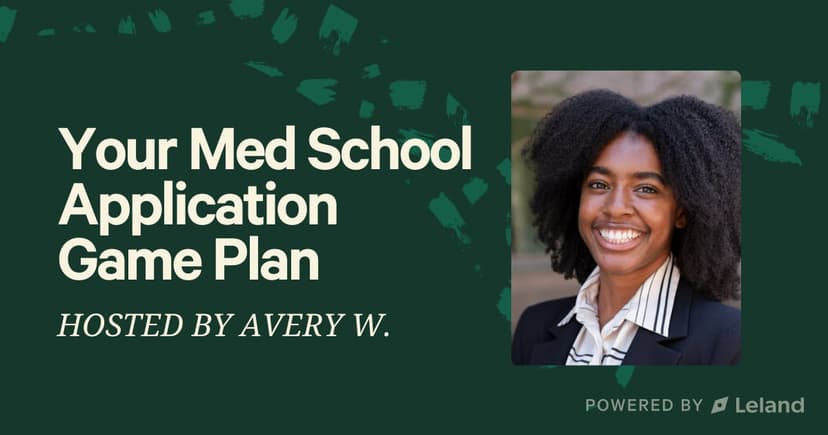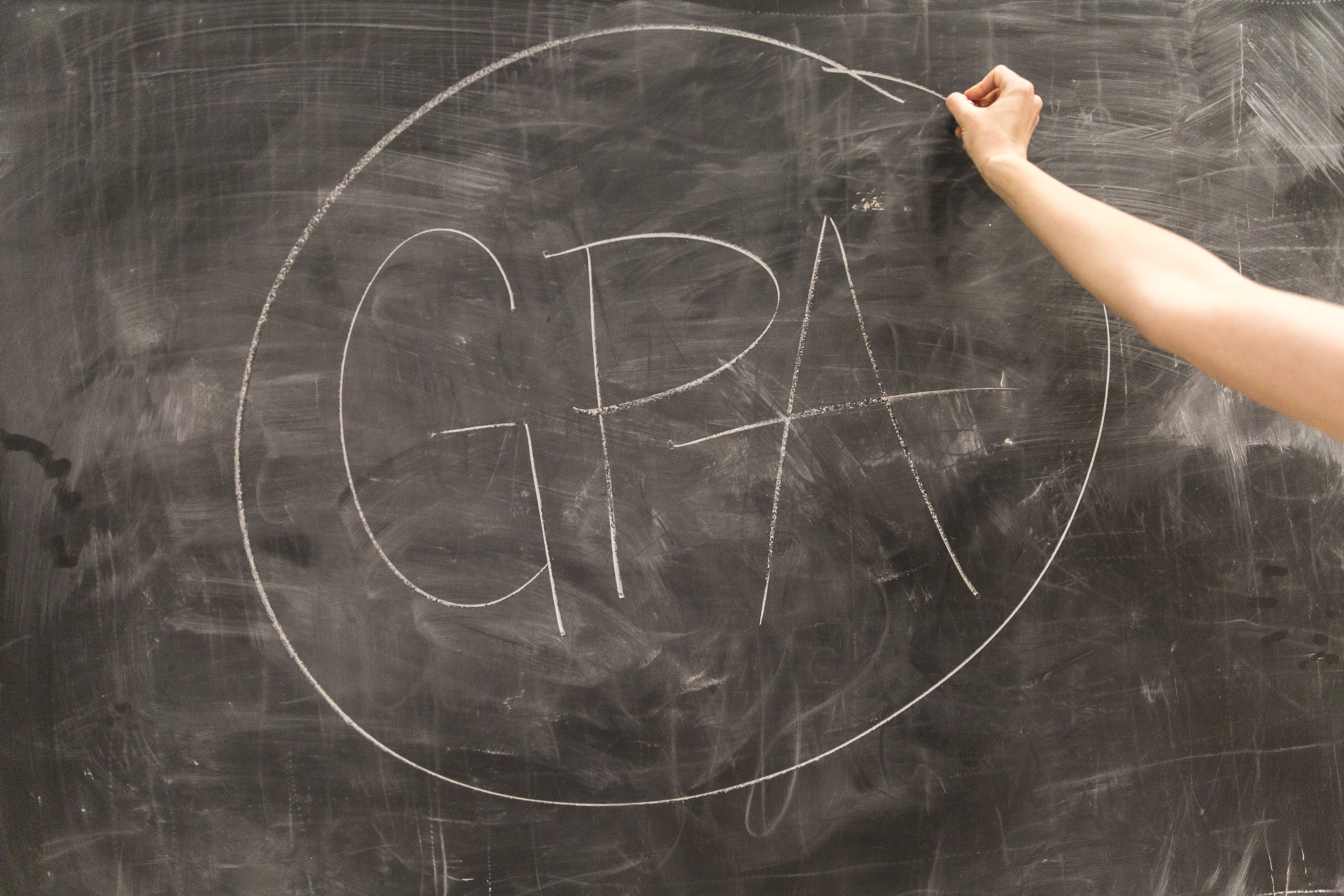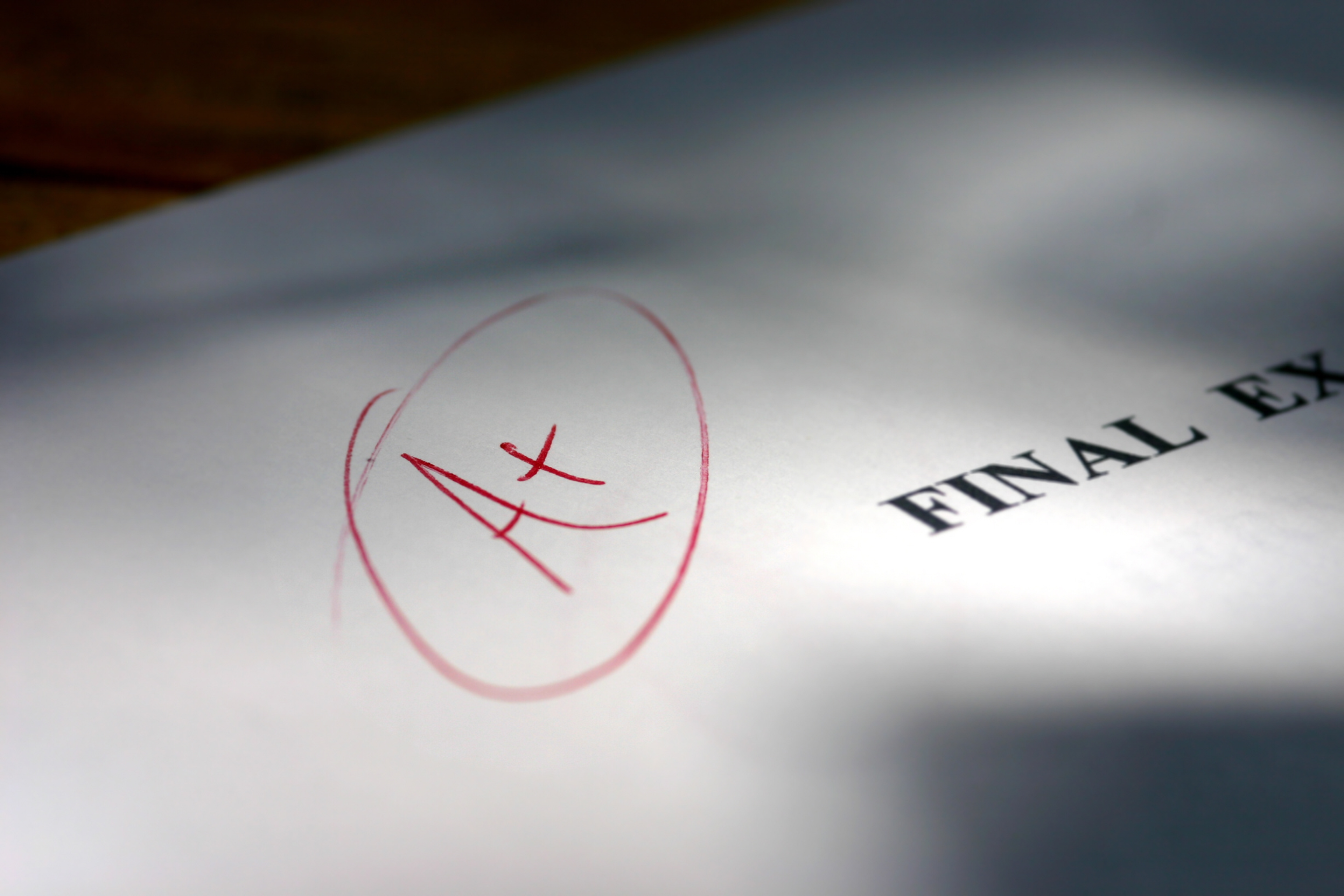AACOMAS Application Timeline (2025-2026): Key Dates and Tips
Discover the 2025-2026 AACOMAS application timeline, key dates, and expert tips to apply early and stand out for osteopathic medical schools.
Posted June 13, 2025

Join a free event
Learn from top coaches and industry experts in live, interactive sessions you can join for free.
Table of Contents
Applying to osteopathic medical schools through the AACOMAS system requires meticulous planning and preparation. This guide offers a detailed timeline, tactical advice, and practical tips to help applicants prepare for the 2025-2026 AACOMAS application cycle with confidence.
What is AACOMAS?
AACOMAS (American Association of Colleges of Osteopathic Medicine Application Service) is a centralized application platform used by students applying to colleges of osteopathic medicine in the United States. It simplifies the process of applying to multiple schools by allowing applicants to submit their materials (personal statements, transcripts, test scores, and more) through a single portal. Unlike the application process for MD schools, which uses the AMCAS system, AACOMAS is specifically designed for osteopathic medical schools.
Osteopathic medicine focuses on holistic patient care and emphasizes the connection between the body’s structure and function. The application process is highly competitive, and understanding the AACOMAS timeline is essential for maximizing your chances of acceptance.
AACOMAS Application Timeline
Key Dates for the AACOMAS Application Cycle
| Date | AACOMAS Deadline |
|---|---|
| May 5, 2025 | Application opens |
| June 2025 | Recommended submission |
| Late June-October | Peak season for secondaries |
| September-January | Peak season for interviews (though they can start earlier and end later) |
| January-March 2026 | Most schools' deadlines (check specific program deadlines) |
Expert Tip: Applying early is important because many schools use a rolling admissions process, reviewing pplications as they’re received. The earlier you apply, the higher your chances of admission because the more spots there are available in the class.
DO Program Deadlines
Here are a couple of schools' deadlines to give you an idea of the timeline. However, to reiterate: with rolling admission deadlines, it is important that you apply as soon as you can. If possible, aim for the first two weeks in June to maximize your chances of getting in.
| DO Program | Deadline |
|---|---|
| Michigan State University College of Osteopathic Medicine (MSUCOM) | December 1 |
| Philadelphia College of Osteopathic Medicine (PCOM) | February 1 |
| Lake Erie College of Osteopathic Medicine (LECOM) | April 1 |
| Kansas City University College of Osteopathic Medicine (KCU-COM) | March 1 |
| Nova Southeastern University Dr. Kiran C. Patel College of Osteopathic Medicine (NSU-KPCOM) | January 31 |
Early Decision (EDP Programs)
Some DO programs offer early decision, where applicants apply early and are informed about the outcome of their application early enough to apply to other schools through the regular process. EDP applicants only apply to one medical college through the process and, if offered an EDP acceptance, they must attend that college.
Here are the colleges that offer EDP programs:
- A.T. Still University Kirksville COM (ATSU-KCOM)
- Campbell University Jerry M. Wallace SOM (CUSOM)
- Marian University Tom and Julie Wood COM (MU-WCOM)
- Rocky Vista University College of Osteopathic Medicine (RVUCOM)
- Rocky Vista University - Montana College of Osteopathic Medicine (RVU-MCOM)
- Rowan-Virtua SOM (Rowan-Virtua SOM)
- Touro College of Osteopathic Medicine (TouroCOM-NY/MT)
- University of North Texas Health Science Center/Texas COM (UNTHSC/TCOM)
- Edward Via COM (VCOM)
On its site, AACOM provides the following guidance on EDP programs: The decision to apply through the EDP should be made carefully. While criteria vary among the colleges regarding their requirements, a frequent standard is that only those applicants who display exceptional credentials are admitted through the EDP process. Applicants considering an EDP application should contact the medical college admissions office for more specific information.
AACOMAS Ideal Application Timeline
Summer (Year Before the Application): June-August
- Build up your shadowing hours (aim for 4-50+ hours)
- Start clinical work/volunteering/research if not already
- Start lightly researching schools and track prerequisites
- Begin MCAT prep (depending on when you’re taking it)
- Keep track of all of your activities in a doc/spreadsheet
Fall (Year Before the Application): September-December
- Finalize school list and track AACOMAS requirements
- Identify and build relationships with letter writers (especially a DO)
- Begin brainstorming topics/themes for your personal statement, reflect on who you are, why DO, and your future
- If taking MCAT in January-March, begin structured study plan
Winter (Year of the Application): January-March
- Finalize list of recommenders and send early notice
- Take MCAT (ideal first attempt window: Jan-March)
- Begin drafting your personal statement
- Collect your official transcripts
- Finalize and send LOR packets with deadlines to recommenders
Spring (Year of the Application): January-March
- Final MCAT prep + take test (latest ideal = March-April), get scores back (typically ~4 weeks after test)
- Get feedback on your personal statement and edit/polish
- Final school list with backup targets + financial aid research
- Register for AACOMAS application alerts and create an account
- Draft your full list of activities/extracurriculars
Early Summer (Year of the Application): April-May
- Add your activities and descriptions to AACOMAS
- Final LOR submissions
- Final application proofreading
- Request transcripts if not already done
Mid-Late Summer (Year of the Application): June-August
- Submit AACOMAS by early June for maximum advantage
- Secondary applications start arriving (turn them around in 7-10 days)
- Prep for interviews (MMI, traditional formats, ethical questions)
- Monitor AACOMAS application status for transcript verification
- Continue secondaries and interviews
- Retake MCAT if needed (last possible = July-August, but not ideal)
- Monitor school portals for interview invites
Application Requirements, Tips, & Deadlines: Step-by-Step
1. Take the MCAT
Deadline: Anytime from the summer before the year you apply to the following winter. Typically, the earlier you can get it done, the better.
At the very latest, aim to take the MCAT by April or May to ensure your MCAT score is available for early submission in June. If possible, schedule your test even earlier to allow time for a retake if needed.
MCAT test dates fill up quickly, especially during the spring and early summer, so register as early as you can. Registration typically opens several months in advance, so secure your preferred date and location as soon as possible. Many prospective applicants choose to take the test in their junior year so they don’t have to stress about getting the right score in the months leading up to the application.
Expert Tip: A good study plan can make or break your MCAT score. There are three core pillars to think about as you prep for the test:
- Focus on high-yield topics (e.g., biochemistry pathways, organic chemistry reactions, and critical analysis) to get the most out of your practice. Focusing on the areas that come up the most frequently has the highest chance of boosting your results.
- Begin taking full-length practice exams under timed conditions about 6-8 weeks before your test date. Prioritize AAMC official practice exams as they most closely mimic the actual test.
- Use those practice test results to identify weak areas and dedicate extra time to improve those sections. At this point, focus on what you most need to improve instead of studying more broadly. It’s a waste of time to study what you’ve already mastered.
2. Research Schools & Build Your Application List
Deadline: Finalize school list and track AACOMAS requirements in the fall before the application year. That way you can make sure you have all the prerequisites taken care of, and it gives you adequate time for research.
There are over 40 DO programs across the U.S., each with their own mission, curriculum structure, and selection priorities. One of the most common mistakes AACOMAS applicants make is applying to schools without a clear sense of fit. You want to go to a DO program that best fits your goals, values, lifestyle, and culture; schools want students who also fit what they’re looking for. You should also consider factors like geographic location, financial aid, prerequisites, and competitiveness levels to ensure you’re applying strategically.
Use the AACOMAS Program Directory as your base, but do your homework on top of that. Visit each school’s website. Read the mission statement. Look at where students do their rotations. Research OMM curriculum emphasis. Many schools lean heavily into rural health, primary care, or community medicine, others offer more flexibility for specialties.
Expert Tip: If you can, talk to current students and alumni of these programs to learn about their experiences. What did they like and dislike about the school? Where did they get the most value? What would they have done differently?
Read: How Many Medical Schools Should You Apply To? Experts Weigh In
3. Contact Your Letter Writers
Deadline: You should be building relationships with your recommenders throughout your time in school. Ideally, you should see if they’re willing to write your letters in November-January, then follow-up as the deadlines get closer. You can ask later as well, but more time is typically better so that they are aware and have adequate time to do a great job.
Again, it’s important to start early. Reach out to your letter writers in the fall before you apply, well before the application cycle opens. Common letter writers include science professors, physicians (preferably DOs), research mentors, and pre-health committee advisors.
Get letters that are specific to osteopathic medicine; admissions committees want proof that you understand and are committed to the field, that you know what you’re getting into and will succeed. A letter from a DO who can speak to your curiosity, empathy, and alignment with osteopathic principles carries significant weight. If you’re struggling to get a DO letter, consider virtual shadowing platforms, osteopathic associations, or asking your pre-health office for alumni connections.
Expert Tip: Provide your letter writers with a recommender prep doc that includes the following. It will help them write the strongest possible letters that have great anecdotes and are personal to you and your journey into medicine.
- Resume
- Draft personal statement
- Summary of experiences with that recommender (e.g., "In your class, I led the community health case study and wrote my final paper on X...") and a couple of stories/examples
- Any other context on your application that may be helpful
- Clear instructions for AACOMAS or Interfolio
- Deadline (aim for June 1, remind them by May 1)
4. Brainstorm & Draft Your Personal Statement
Deadline: Spend some time reflecting in the fall, but begin more seriously brainstorming in the early winter months. Try and get the first draft done by March at the latest so you have time to get feedback, rewrite, and polish. Typically, the more iterations, the better. Your first draft is almost never the version that you’ll want to submit and it takes more time than most applicants think.
One of the most important pieces of the application, the personal statement is your chance to show who you are, not just what you’ve done. The best statements show 1) a deep understanding of osteopathic philosophy (e.g., mind-body-spirit, OMM, preventive care), 2) genuine motivation rooted in patient interaction or healthcare exposure, and 3) qualities like empathy, humility, adaptability, and a community-first mindset. Your personal statement should also be specific to you – if any other applicant could submit the same essay, it’s not personal enough. Spend the requisite time on reflection and dig deep.
Here are some questions to think through as you start brainstorming:
- What first drew you to DO vs. MD?
- How has shadowing or working with a DO shaped your understanding?
- When have you taken a holistic approach to solving a problem – either medically or otherwise?
- When have you helped someone by seeing the person, not just the symptoms?
Personal statements are super important. Here are a couple more tips to help you draft really powerful essays:
- Show, don’t tell your understanding of osteopathic medicine. Don’t just say you believe in “holistic care” or that you’re “drawn to the DO philosophy.” Instead, show how those principles have shaped your path. Describe a moment shadowing a DO where the connection between lifestyle, mental health, and physical well-being became clear – and how that changed your outlook on medicine. Admissions readers want to see that you understand osteopathic medicine beyond surface-level language.
- Anchor your narrative in a DO-specific experience. Whether it was through shadowing, mentorship, or patient interaction, your personal statement should feature a moment that’s uniquely osteopathic. Highlight how you saw hands-on care, OMM, or the emphasis on prevention and long-term patient relationships in action. That story will do far more to convince the committee than generic lines about passion or empathy.
- Weave in the tenets of osteopathic medicine through your own story. Don’t list or define the four tenets, embody them. If you learned about structural-function interdependence through your work with physical therapy patients, or if you witnessed self-healing capacity during a family member’s recovery, connect that organically. These principles should show up in your experiences, not your buzzwords.
- Balance personal vulnerability with professional clarity. Your statement should reflect emotional intelligence, but not overshare. Use one or two personal stories to highlight resilience, curiosity, or values, and then connect those to your work in clinical, volunteer, or research settings. The best statements feel both authentic and grounded in evidence that you’re ready for med school.
- Demonstrate evolution, not just a single spark. Strong applicants don’t rely on a childhood story or one pivotal moment. You can still have that initial impetus, but then show how your interest in medicine (and specifically osteopathic medicine) has deepened over time. The narrative arc should reflect growth: curiosity → exposure → reflection → commitment. That trajectory is far more compelling to admissions officers than a single childhood moment that changed everything.
- Make your final paragraph future-facing and DO-specific. The conclusion should tie together your values, experiences, and vision for the kind of physician you want to become, and why the DO path is essential to that. Mention the type of impact you hope to have, and how the osteopathic lens will shape your care and career over time.
- Edit ruthlessly, and get DO-specific feedback. Ask mentors, advisors, or admissions consultants who understand AACOMAS to review your draft. Remove vague language, overused phrases, and repetition. A great personal statement is concise, vivid, and impossible to copy-paste into an MD application without sounding off. Get an expert’s perspective for a third-person perspective who can help you understand how your essay may come off to an admissions committee.
5. Get Your Extracurricular Activities Together
Deadline: Throughout school, internships, shadowing, research, etc., you should be keeping records of what you’re doing and learning and how it’s changed you. Get a final list of everything you’ve done by April so you have about a month to finalize what you want to prioritize and draft the descriptions.
If you’re applying this cycle, you’re at the point where you’re not building your resume, you’re showing what you’ve already done in the most strategic, reflective, and DO-aligned way possible. Admissions committees don’t want a laundry list; they want to see substance, growth, and a track record of patient-facing experience that proves you're ready for the demands of osteopathic training. Fewer experiences that are deeper and more tied to your goals and who you are much stronger than a long list of things you did lightly or for no reason other than the application.
A couple of other things to note:
- Some level of clinical exposure is typically a non-negotiable, especially for highly-ranked programs, because it shows the AdComs that you understand what’s different about the osteopathic model and that you’re more likely to stick it out in school.
- Hands-on roles are powerful. Working as a medical scribe, EMT, CNA, or medical assistant is one of the best ways to prove your clinical readiness. Don’t undersell it, highlight moments where you collaborated with providers, witnessed patient outcomes, or saw holistic care in action. And again, you should use your AACOMAS entries to demonstrate how you grew, not just what you did.
- Service matters, but reflection matters even more. Hospitals, shelters, clinics, schools – wherever you’ve volunteered, admissions committees want to know: What did you learn? Who did you serve? How did this shape your character? Osteopathic medicine is rooted in community care and empathy. If you’ve worked with underserved populations, reflect that in your entries. Take time to think about the impact these experiences had on you and how you are a different person moving forward.
- Research can be a differentiator. While not required, medically relevant research (especially related to public health, anatomy, or neuroscience) can add depth. What questions were you exploring? What did you learn about the scientific process and about yourself?
- Organize, then optimize. Before you start inputting your AACOMAS experiences, do a full audit. Track every activity in a spreadsheet and include dates, hours, supervisors, and notes on impact or takeaways. You’ll want to categorize them clearly (e.g., “Patient Care,” “Leadership,” “Research,” “Community Service”) and write concise, thoughtful descriptions with results or reflections built in. This is where many applicants lose points for being generic or vague. Specificity wins. And it makes sure you don’t leave out any important experiences you may have forgotten about.
Read: Research Hours for Medical School: How Many You Need & How to Get Them
6. Create Your AACOMAS Account and Understand the Platform
Deadline: Open your account by early April so you can explore the platform, track requirements, and begin uploading materials before the June 2025 opening.
The AACOMAS application portal can feel overwhelming if you wait until the last minute. Create your account even before you have all your materials ready so you can start getting comfortable with the layout, terminology, and submission tools. Use this time to input basic information and map out your task list.
Familiarize yourself with the four core sections:
- Personal Information: Demographics, contact info, and background.
- Academic History: Every college attended and all coursework. Precise course entry is essential for timely verification.
- Supporting Information: This includes your experiences, achievements, letters of recommendation, and your personal statement.
- Program Materials: Each DO program may ask for additional questions or uploads here.
7. Request Transcripts From Every College Attended
Deadline: Start requesting transcripts by mid-to-late April. The goal is to have them received by AACOMAS shortly after you submit in June.
This is one of the easiest parts of the application to mess up. Your transcripts must come directly from the registrar of each institution and must be linked to your application using the official AACOMAS Transcript Request Form.
Contact your registrars early (some schools have long processing times), resolve any holds (unpaid balances, missing paperwork) that could block transcript release, and track delivery via the AACOMAS portal. Transcripts can take several days to be marked as received and even longer to process.
Expert Tip: Do a full audit of your academic history before ordering. Are you including dual enrollment, summer classes, community college transfer credits? Leaving out a transcript, even for a single class, can cause serious delays in verification.
8. Send Your MCAT Scores
Deadline: Send scores as soon as you have them, and ideally by early June.
MCAT scores must be sent from your AAMC account to AACOMAS, which can take several business days. Make sure your AAMC ID matches your AACOMAS ID exactly. Mismatches are a surprisingly common delay and can affect your verification timeline. If you're planning to retake the MCAT, you can indicate this in your application. Schools are typically willing to wait for the new score as long as they know it's coming, but you have to tell them.
9. Submit Your Primary Application
Deadline: Submit as early as possible after the portal opens – typically between June 1 and June 15.
DO schools use rolling admissions, which means seats are filled as strong applicants apply. The earlier you submit a complete, verified application, the more interview slots and scholarships are available. Again, aim for a submission in the first two weeks of June.
Before you hit submit, confirm that your MCAT scores and all transcripts have been received. Review every section, especially course entries and the activities section, for typos, errors, or formatting issues. Treat your primary submission like a final product. Once it’s in verification, you can’t change most of it. Ask a mentor, advisor, or admissions coach to do a line-by-line review for clarity, tone, and typos. This is a one-time opportunity to make a clean first impression.
10. Prepare for and Submit Secondary Applications
Deadline: Ongoing from mid-June through late summer. Turn around most secondaries within 7-10 days of receiving them.
Most osteopathic schools will automatically send you a secondary once your primary is verified. Some are just fee payments, but many include school-specific essays that evaluate fit and commitment.
You should have done this in your school research, but continue to do deep dives into each school’s mission, curriculum structure (e.g., block vs. systems), and clinical training sites so you understand the programs and can reflect that in your answers. Timeliness does matter. Many schools interpret a slow response as lack of interest. Submit your secondaries quickly, but not sloppily – this is where most applicants lose momentum.
11. Prepare for DO Interviews
Deadline: Begin serious prep as soon as your secondaries are submitted – interviews can begin as early as August and often run through March.
Know that once your application is verified and your secondaries are in, interview invites can come quickly, sometimes within a few weeks. Because osteopathic programs operate on rolling admissions, early interview performance can directly impact your chances of acceptance, financial aid, and scholarship opportunities.
Most DO interviews are either traditional one-on-one or panel-style, though some schools are beginning to experiment with MMI (Multiple Mini Interview) formats. Regardless of structure, the goal is the same: the AdCom wants to understand how you think, communicate, and reflect core osteopathic values.
Here are some key tips for DO interviews:
- Practice in realistic conditions, not just out loud. Mock interviews should mirror the exact format of your real interview, whether it’s virtual or in-person. If you’re doing a virtual interview, set up a quiet space, use a laptop or desktop (not a phone), and record yourself. Pay attention to lighting, background, eye contact, and vocal pacing. Most importantly, simulate follow-up questions. DO interviewers often ask, “Can you say more about that?” or “Why do you think that mattered?” Your answers need to hold up when pressed – this is how they test depth, not just polish. An expert admissions coach can also be very helpful here.
- Use the STAR method, but make your stories values-forward. Structure matters, but so does meaning. For every scenario you prepare (e.g., conflict with a teammate, adapting under pressure), don’t just explain what happened. Show how the story reflects DO-relevant values: compassion, humility, resilience, curiosity, or community commitment. Add a closing reflection: What did you learn, and how will it make you a better osteopathic physician?
- Do a forensic read of your AACOMAS application. Know your personal statement, experience entries, and secondaries inside and out. DO interviewers will often pick one line and ask you to expand. Practice answering: “What was the biggest lesson you took from this experience?” or “How would you approach that situation differently now?” Flag any vague or general phrasing in your application, that’s where your interviewer is likely to dig.
- Present yourself like someone ready for patient care. Whether virtual or in-person, your goal is to convey presence, not just preparedness. This means dressing professionally (business formal, conservative colors); making eye contact, smiling, and listening without interrupting; and saying “thank you” at the end and asking one thoughtful, school-specific question that demonstrates interest and insight. DO interviews weigh emotional intelligence heavily. Your ability to show empathy, listen actively, and express curiosity is as important as your accomplishments.
Expert Tip: The most competitive DO candidates don’t just answer questions, they create connection. Let your curiosity, warmth, and motivation come through. Show the admissions committee not just that you want to be a doctor – but that you’re the kind of doctor they’d want in their program, their profession, and their community.
Bottom Line
The AACOMAS application is more than a portal, it’s a reflection of your preparation, clarity, and long-term commitment to osteopathic medicine. From timing your MCAT to perfecting your personal statement, every step of the process affects how programs view your candidacy. Because of rolling admissions, applying early – and applying well – can make a major difference in your chances.
Give yourself more time than you think you'll need, build your school list with intention, and show real understanding of the DO philosophy, not just interest in becoming a doctor. And make sure every part of your application, from transcripts to secondaries to interviews, tells a consistent, reflective, and DO-aligned story. You got this!
Need Help With Your AACOMAS Application?
Applying to medical school can be challenging, but you don’t have to do it alone. Medical school coaches can help you every step of the way, from perfecting your personal statement to preparing for interviews. With personalized advice and insider tips, they'll help you put together the strongest version of your application.
Looking to learn more about the medical school application process? Check out these helpful resources:
- How to Write a Powerful Personal Statement for Medical School
- The 25 Best Osteopathic Medical Schools
- How Long is Medical School – A Year-by-Year Breakdown
- The Best 50+ Free Resources for the MCAT Exam
- Medical School Requirements: What You Need to Get In
FAQs – AACOMAS
How long does it take for AACOMAS to process?
- AACOMAS typically takes 2–4 weeks to process your application after you submit it. This includes verifying your transcripts, recalculating your GPA, and reviewing your information. Submitting early can reduce wait times during peak periods.
What month do most people get accepted to medical school?
- Most applicants receive acceptance offers between March and May, though this varies by school. Waitlist movement often continues into the summer, so it’s possible to hear back later.
What is the character limit for the AACOMAS personal statement?
- The AACOMAS personal statement has a 5,300-character limit, including spaces. This is approximately 1.5 pages. Focus on crafting a concise, impactful narrative that highlights your motivation for pursuing osteopathic medicine.
When can you submit AACOMAS in 2025?
- The AACOMAS 2025-2026 application opens May 5, 2025, and submissions begin at the beginning of June. You should aim to submit your application as early in June as possible to maximize interview opportunities, since most DO schools use rolling admissions.
What GPA do you need to get into osteopathic school?
- For those admitted in 2024, the average overall GPA was 3.6, with an average science GPA of 3.52 and a non-science GPA of 3.71. These numbers have stayed fairly consistent in recent years so try and shoot for them as a baseline.
Browse hundreds of expert coaches
Leland coaches have helped thousands of people achieve their goals. A dedicated mentor can make all the difference.


















